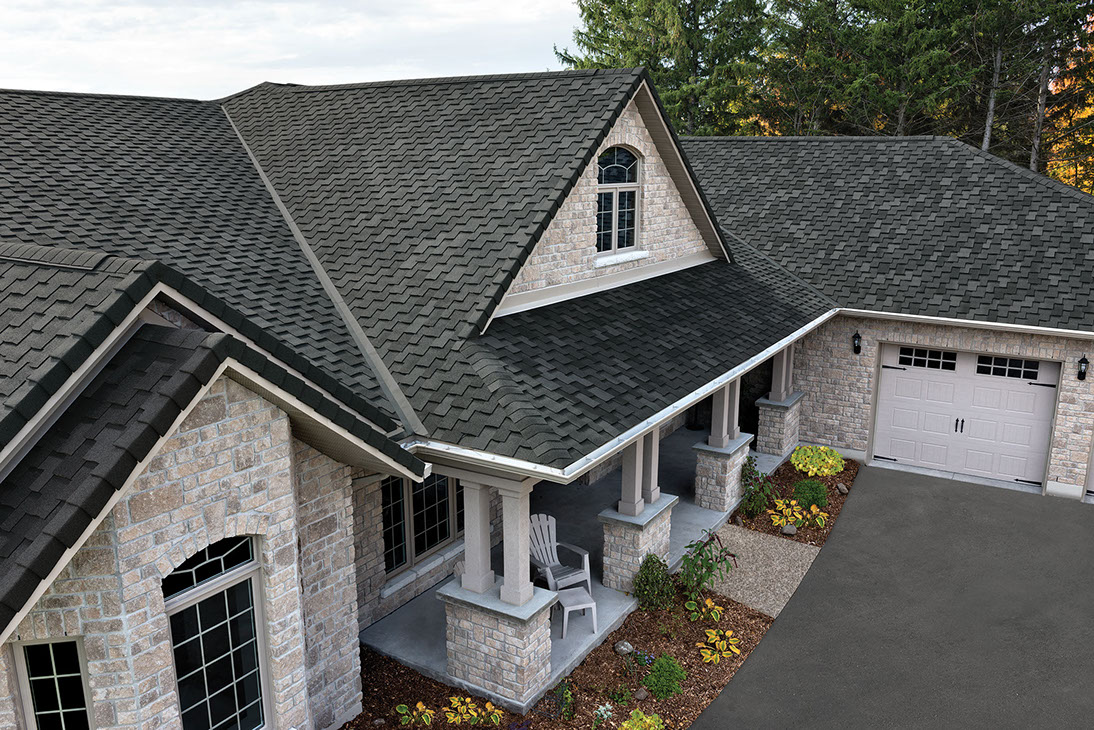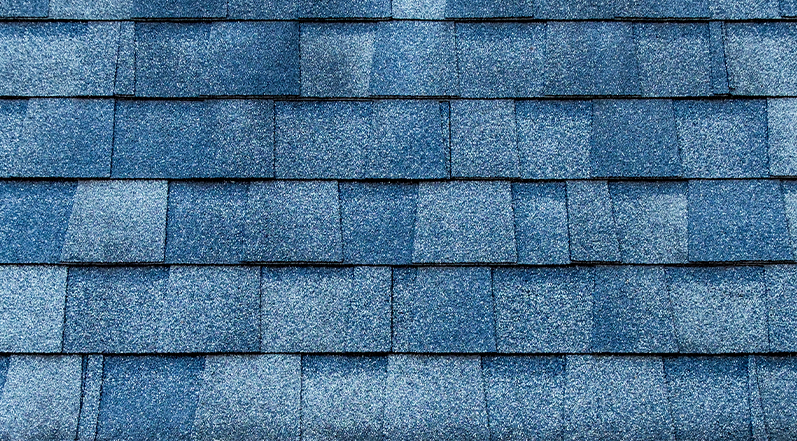The Aesthetic Benefits of Architectural Shingles: Transforming Rooflines Across Catharines
The Aesthetic Benefits of Architectural Shingles: Transforming Rooflines Across Catharines
Blog Article
A Comprehensive Overview to Comprehending Architectural Shingles and Their Advantages
Building shingles stand for a preferred option among property owners seeking a mix of design and performance (architectural shingles). These shingles differ markedly from typical choices, using boosted toughness and visual allure. Recognizing their one-of-a-kind features is important for making informed choices concerning roofing. As property owners consider their options, the myriad advantages of architectural shingles could influence both the appearance and durability of their roof coverings. Exactly what establishes them apart, and just how can they enhance a residential property's overall value?
What Are Architectural Shingles?
Architectural shingles, typically regarded for their visual allure and durability, are a preferred roof option among property owners. These tiles are produced using several layers of asphalt, providing a thicker account compared to typical three-tab roof shingles. This style not only enhances their aesthetic texture but additionally adds to their strength versus severe weather condition conditions.Architectural shingles can be found in a selection of styles and shades, allowing homeowners to tailor their roofing to match their individual choices and home layout. Their dimensional appearance typically mimics the appearance of more expensive roofing products, such as timber shakes or slate, without the associated costs.Additionally, building shingles usually have a longer life expectancy than common alternatives, typically lasting as much as 30 years or even more with correct maintenance. This combination of longevity, visual flexibility, and performance makes building shingles a favored option in household roofing services.
Secret Differences Between Architectural and Three-Tab Roofing Shingles
While both three-tab and architectural tiles function as prominent roof products, they differ substantially in efficiency, design, and resilience. Architectural roof shingles, also called dimensional tiles, feature a layered style that develops a three-dimensional appearance. This not just enhances aesthetic allure but also gives raised wind resistance contrasted to three-tab shingles, which have a flat, uniform shape.In terms of durability, architectural roof shingles normally boast much longer life-spans, frequently long lasting three decades or more, whereas three-tab shingles generally last around two decades. This distinction comes from the production process, as architectural roof shingles are made from thicker materials and deal improved security versus harsh climate conditions.Furthermore, setup can vary, with architectural tiles requiring extra precise positioning because of their weight and design. Generally, these differences are necessary for home owners to take into consideration when choosing roofing materials that ideal suit their preferences and demands.
Advantages of Choosing Architectural Roofing Shingles
Selecting architectural tiles provides home owners various benefits that extend beyond aesthetic appeals (architectural shingles). Among the key benefits is their boosted durability compared to typical three-tab roof shingles. Architectural roof shingles are normally made from higher-quality materials, permitting them to withstand rough weather, consisting of hefty rains and high winds. This strength converts into a much longer life-span, commonly surpassing thirty years, which can minimize replacement frequency and costs.Additionally, architectural shingles provide exceptional insulation, adding to better energy effectiveness in homes. Their layered framework helps regulate indoor temperature levels, potentially lowering home heating and cooling down expenses.Another advantage is their resistance to algae development, which assists keep the roofing's appearance gradually. Homeowners additionally appreciate the convenience of installation, lowering labor prices and time on the job. Overall, architectural shingles stand for a smart investment for home owners looking for both functional and resilient roof covering remedies
Aesthetic Charm and Layout Choices
The aesthetic appeal of building roof shingles greatly enhances the general appearance of a home. These shingles are developed to resemble the look of all-natural materials, such as wood or slate, while providing a much more budget friendly remedy. Their dimensional profile produces depth and aesthetic interest, setting them apart from typical three-tab tiles. Available in a broad range of styles, shades, and textures, building tiles can enhance diverse building layouts, from modern to traditional.Homeowners can select tones that harmonize with their outside paint or landscaping, ensuring a natural appearance. Furthermore, the multi-layered construction of these roof shingles enables for unique patterns and designs, making it simple to personalize a home's exterior. The flexibility of building shingles makes them ideal for different climates and aesthetics, attracting those seeking both functionality and design in their roofing selections.
Sturdiness and Longevity of Architectural Shingles
The longevity and durability of architectural shingles are crucial factors for homeowners thinking about roof alternatives. These tiles use premium resistance to weather elements, commonly outliving standard roofing materials. Furthermore, the quality of setup plays a substantial function in optimizing their life-span.
Resistance to Weather Condition Aspects
Although architectural roof shingles provide an aesthetically pleasing roof covering alternative, their real worth exists in their excellent resistance to various weather condition elements. Developed to withstand harsh conditions, these roof shingles are typically made from high-grade products that enhance their longevity. They are engineered to resist wind uplift, with numerous items rated to withstand winds of as much as 130 mph. Additionally, architectural tiles have a protective granule layer that helps guard versus UV rays and avoids algae development, making sure durability and maintaining appearance. Their thicker layout additionally supplies better influence resistance, reducing the risk of damage from hail storm or dropping particles. Generally, this durability makes building shingles a trustworthy choice for homeowners seeking protection from the elements.
Life-span Contrasted to Typical
When compared to typical 3-tab roof shingles, architectural roof shingles not only succeed in weather condition resistance yet also flaunt an excellent lifespan. Normally, architectural shingles can last in between 25 to 50 years, substantially exceeding the 15 to 20 that site years anticipated from standard 3-tab choices. This extended durability is credited to their thicker building and construction and multi-layer layout, which improves toughness against ecological aspects such as uv, wind, and rain exposure. Furthermore, the materials made use of in architectural roof shingles typically feature boosted warranties, reflecting manufacturers' self-confidence in their efficiency with time. Property owners spending in building shingles can expect not only far better visual appeals yet also a more reliable roof covering solution that reduces the demand for constant substitutes, ultimately profiting their long-term upkeep budget plan.
Effect of Installation Quality
Proper installment plays a crucial role in establishing the durability and durability of building roof shingles. A well-executed setup lessens the risk of issues such as water infiltration, wind uplift, and early wear. Professionals need to make sure that shingles are straightened properly, attached safely, and that underlayment is appropriately laid. In addition, following supplier guidelines is essential, as discrepancies can void warranties and compromise performance. Poor installment can cause pricey repairs and replacements, frequently negating the advantages provided by building tiles. Investing in knowledgeable labor and adhering to best practices is important for home owners looking for to make the most of the advantages of their roof financial investment. Eventually, top quality installment straight correlates with the roof shingles' capacity to stand up to ecological stress and anxieties gradually.
Installment Process and Factors To Consider

Cost Comparison and Worth for Money
While lots of property owners focus on aesthetics and sturdiness when picking roofing products, the cost of building shingles also plays a crucial role in the decision-making process. Typically valued in between $90 to $100 per square, building tiles are more pricey than three-tab tiles yet use enhanced longevity and efficiency. The first investment can be offset by their longer life expectancy, often long-term 25 to 50 years compared to the 15 to 20 years of typical shingles.Additionally, architectural roof shingles require much less upkeep and give much better resistance to weather-related damage, possibly lowering repair work costs in time. House owners ought to likewise think about the boost in home value that quality roofing can bring, as building tiles add aesthetic charm and can attract prospective purchasers. To end, while the useful site in advance costs might be greater, the value for money supplied by architectural tiles can be substantial regarding toughness and long-term financial savings.
Frequently Asked Inquiries
Can Architectural Roofing Shingles Be Recycled After Their Life expectancy?
The inquiry of reusing architectural roof shingles after their life expectancy is substantial. Lots of manufacturers urge reusing, allowing tiles to be processed right into asphalt products, consequently lowering waste and promoting ecological sustainability in roof practices.
What Is the Best Climate for Architectural Roofing Shingles?
The very best climate for architectural roof shingles includes moderate temperature levels, reduced moisture, and minimal extreme climate. These conditions improve the shingles' life-span and performance, enabling them to resist wear while preserving their visual allure gradually.

How Do I Know if My Roof Covering Needs Replacement?
To identify if a roof requires replacement, one should inspect for missing tiles, considerable granule loss, leaks, or visible sagging. Furthermore, age and general wear can suggest whether substitute is necessary for long-term protection.
Are Architectural Roofing Shingles Suitable for Flat Roofs?
Building tiles are typically not advised for flat roof coverings because of their layout, which is intended for sloped surfaces. Flat roofing official statement systems call for products that can properly manage water drain and stop merging, such as membrane systems.
Can I Mount Architectural Shingles Over Existing Roofing Shingles?
The installment of building tiles over existing tiles is normally permitted. Nevertheless, roofing professionals commonly suggest a complete inspection to guarantee appropriate attachment and stop potential concerns with weight, water drainage, and total roof covering integrity. These tiles are made making use of numerous layers of asphalt, offering them a thicker account compared to conventional three-tab tiles. Building tiles, also known as dimensional roof shingles, feature a split layout that develops a three-dimensional appearance. Building tiles not just stand out in climate resistance however also flaunt an excellent life expectancy when contrasted to conventional 3-tab roof shingles. Correct underlayment is crucial; it acts as a wetness barrier and improves the roof shingles' lifespan.When laying the shingles, installers must follow the producer's guidelines closely, including correct overlap and placement to avoid leakages. Typically priced between $90 to $100 per square, building shingles are much more expensive than three-tab tiles but provide improved durability and efficiency.
Report this page